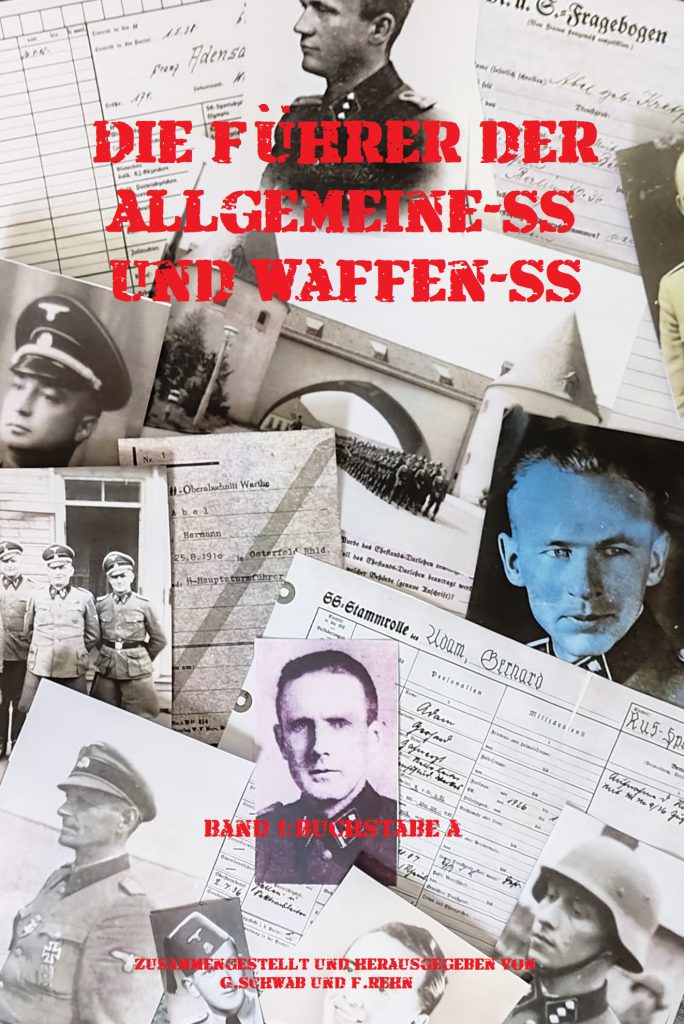Home » SS-Personalities
Category Archives: SS-Personalities
Kz Sachsenhausen Kommendants
The concentration camp Sachsenhausen was located between 1936 and 1945 in the town of Oranienburg, about 30 km north of Berlin. Today, the camp area is located in the easter part of the city of Oranienburg, in the federal state of Brandenburg. Between 1936 and 1945, KZ Sachsenhausen was a Nazi German concentration camp. The camp was taken over in 1945 by the Soviet occupying power and used as a camp for German prisoners of war, NSDAP functionaries and Russian deserters. The camp was finally closed in 1950 and since 1961 is a memorial site with a museum.
KZ Sachsenhausen, established in 1936, was the first specially designed concentration camp and became the prototype for the SS camp. It was designed and laid out as the perfect concentration camp – the “modern, thoroughly contemporary, ideal and easily expandable concentration camp” as Reichsführer-SS Heinrich Himmler put it. KZ Sachsenhausen became one of the SS’s most important camps. In Oranienburg, near KZ-Sachsenhausen, in 1938 the headquarters of the IKL (ie: Inspektion der Konzentrationslager), the SS authority in charge of the concentration camps, was located.
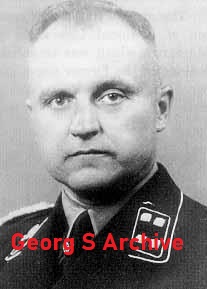
The camp’s first commandant was Karl Koch, born 2.8.1897 in Darmstad, died 5.4.1945 in Buchenwald, who came to Sachsenhausen after being commandant of the former camp KL Esterwegen. This camp was closed in connection with the establishment of KL Sachsnehausen. Karl Koch was a real character, he often saw through his fingers when his SS Soldiers teased the prisoners and he made sure he had a pleasant life as commandant. His time at Saxony was relatively short as after Sachsenhausen he was appointed the first commandant of KL Buchenwald, KL Buchenwald was set up in 1937. It was in this capacity that Karl Koch would really become famous, he and his wife ensured that Buchenwald became their own small kingdom where they could act exactly as they wished. Regarding this life, I will write a little more detailed history about Karl Koch, however, in 1942 he was transferred from KL Buchenwald after SS-Judge Konrad Morgen appointed an investigation into the irregularities that occurred in KL Buchenwald. Karl Koch then became commandant in KL Majdanek/Lublin. But in 1944 he was put in custody for the crimes committed in Buchenwald. He was executed by the SS in April 1945 in Buchenwald.
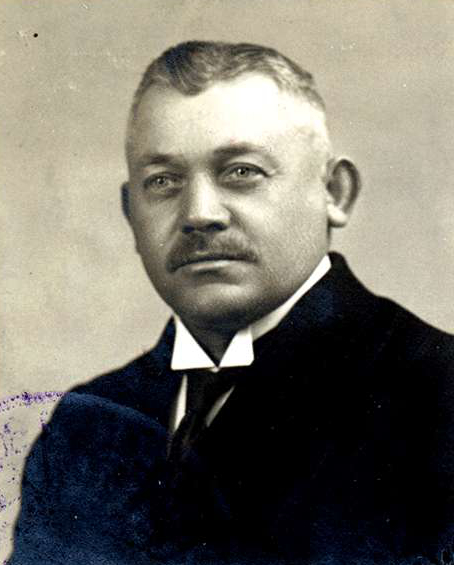
Between the years 1937 and 1938, Hans Helwig (25.9.1881 in Hemsbach died 24.8.1952) held the title of commandant of KL Sachsenhausen, but he was considered too weak and was thus appointed as Commandant. Before KL Sachsenhausen, Helwig was at KL Lichtenburg. He was replaced by the more hard-line Hermann Baranowski.
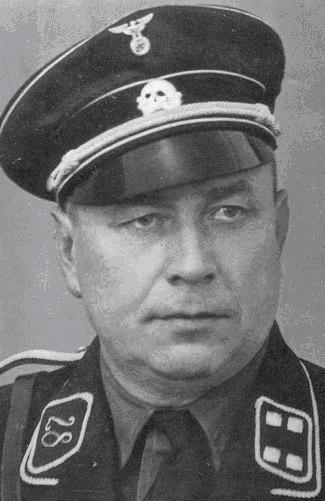
Hermann Baranowski, born 11.6.1884 in Schwerin, came to KL Sachsenhausen after serving as Schutzhaftlagerführer KL Dachau. He was a slightly older gentleman but was not a weak man, he quickly earned the nickname “bloody Hermann”. The first year and until 1939 he had no problems with his health, but it rapidly declined and although on paper he was commandant of KL Sachsenhausen until his death in 1940, it was actually Schütshaftlagerführer Walter Eisfeld who was acting commandant in the last year. Hermann Baranowski died on 5 February 1940 in his hometown of Auer. One of Baranowski’s daughters married the later commandant of KL Stutthof, Paul Werner Hoppe.
Walter Eisfeld who acted as Kommendant of the camp during Baranowskis illness, was a hardcore SS-officer who served for som eyears in different Camps. He soon earned the nickname “Eiskalt” , at one of RFSS Himmlers visits to KL Sachsenhausen in 1940 he thought that Eisfeld took his job not seriuosly enough and had him removed from is Position, he was transfered to KL Dachau where he had served previously. but he was soon to be appointed to become Commandant of the KL Neuengamme in Hamburg which priviously had been a satelite camp to KL Sachsenhausen, but faith had something else in mind fpr Walter Eisfeld, he died 3.4.1940 mysteriously on a visit to his family who lived at the Strasse der SS nearby the KL Dachau.
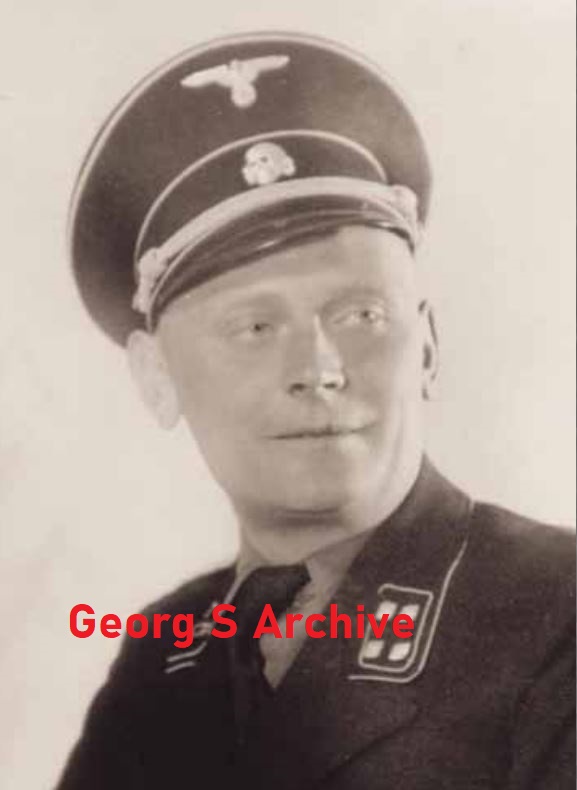
In the first years, the camp’s prisoners mainly consisted of political opposition figures such as social democrats, communists and trade unionists. Afterwards, people who were considered racially or biologically inferior by the Nazis – so-called “asocials”, Roma and Jews – were also interned. After the outbreak of war, Czechs, Poles and citizens from other occupied countries arrived. Especially before the upcoming Olympic Games, Berlin was purged of what they considered antisocials, prostitutes, drunks, beggars and anything else that could be considered to tarnish the perfect German image.
In 1941, at least 12,000 Russian prisoners of war were killed when the SS tested gas tanks and execution by neck shot. This led to the establishment of a gas chamber, an execution room and crematoria in the camp in 1942 instead.
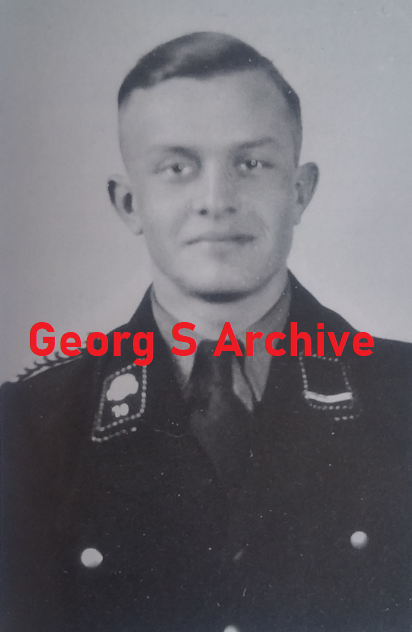
The one who became most famous for these executions of the Russian prisoners of war was the “Pistolen Schubert” which was the nickname of Wilhelm Schubert (8.2.1917 in Magdeburg – Died 12.1.2006 in Solingen) He was captured by the Russian troops after the war, and sentenced in 1947 in the so-called “Sachsenhausen trial” to life imprisonment. In 1955, Wilhelm Schubert came among the last trains home from Workuta, however, he was considered to be among those who would not be spared and he was again sentenced in 1959 to life imprisonment. In 1986, Wilhelm Schubert was released and he was given 20 years in freedom before he finally died. According to the statement, he was very proud of his past and he must have had a picture of himself in SS uniform on the wall of the retirement home where he lived in his last years. He was often courted by people from right-wing extremist organizations and was considered one of their figureheads. He was not married and had no children.
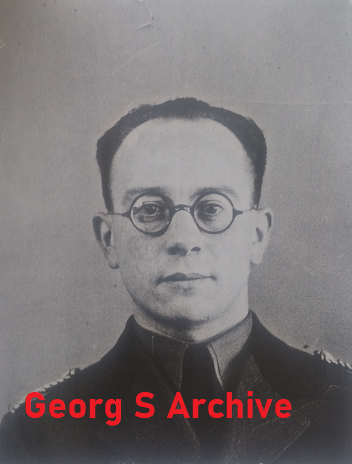
In early 1945, the Red Army approached central Germany and the camp commandant ordered the evacuation of KZ Sachsenhausen. The evacuation was carried out in April, when the approximately 38,000 prisoners were divided into smaller groups and forced to go on so-called death marches towards the northwest. A large number of prisoners died of cold and exhaustion or were shot dead by the SS during these marches. On April 22, Soviet (47th Soviet Army) and Polish troops arrived at the camp where about 3,000 helpless prisoners had been left behind. Between 1936 and 1945, 220,000 had passed through the concentration camp and more than 30,000 had died, most of them Soviet prisoners of war.
Anton Kaindl escaped the camp together with his Adjutant Heinrich Wessel and their wives. They took refuge in Flensburg where, among other things, Richard Glücks together with other parts of the upper echelon of the Concentration Camp leaders were found, i.a. Rudolf Höss. They were asked to get false papers and go underground.
Anton Kaindl escaped the camp together with his Adjutant Heinrich Wessel and their wives. They took refuge in Flensburg where, among other things, Richard Glücks together with other parts of the upper echelon of the Concentration Camp leaders were found, i.a. Rudolf Höss. They were asked to get false papers and go underground.
However, in Kaindl’s case it was a hopeless case, he was captured and handed over to the Russians where he was sentenced to life imprisonment in the Sachsenhausen trial and taken with the others to Workuta in northern Russia. Anton Kaindl could not cope with this and died only after a couple of years. According to Camp Doctor SS-Hauptsturmführer Heinz Baumkööter, there were a number of them who simply gave up and if you did that in the camp, your time was up. Anton Kaindl was born on 14.7.1902 in Munich and died on 31.8.1948 in Workuta. He became commandant of KL Sachsenhausen in 1942 when he succeeded Hans Loritz. He was married but had no children.
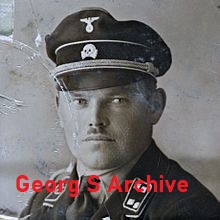
Hans Loritz was born on 21.12.1895 in Neumünster, He was the son of a police officer in Augsburg. At the outbreak of the First World War in 1914, he signed up as a war volunteer in the Bavarian army. He was wounded several times and ended up in July 1918 as a French prisoner of war. He was released in 1920 and came to work within the police authority in Augsburg.
Loritz joined the NSDAP and the SS in 1930 and in 1933 commanded the 29. SS-Standarte Schwaben. After a dispute with an SA leader at the Reichsparteitag in 1933, Loritz was ordered to Dachau, where he was responsible for 1,400 Austrian SS members. In Dachau, he got to know his patron Theodor Eicke, who was the commandant of the camp and head of the Inspectorate for Concentration Camps (IKL). In early 1934, Loritz asked in a personal letter to Reichsführer-SS Heinrich Himmler to be transferred to a concentration camp under Eicke’s supervision, but this request was initially refused.
In July 1934, however, Loritz’s request was granted and he was appointed commandant of the Esterwegen concentration camp, which was located near Esterwegen in the district of Emsland. In the camp, he tightened the rules, personally interrogated prisoners and ordered torture. The camp was closed in 1936 and Loritz then became commandant at Dachau. Loritz urged his guards to be harsh and imposed a number of brutal punishments.
Loritz’s corruption made him the subject of investigation by the SS-Verwaltungsamt. Among other things, he had prisoners build a private villa in Sankt Gilgen by the Wolfgangsee, the villa is still there today. This resulted in him being ordered to Graz in July 1939 as SS-Abschnittsführer, but already in December of the same year he was appointed acting camp commandant in Sachsenhausen; in March 1940 he became regular commandant. In Sachsenhausen, he stepped up the terror and the repressive measures. In 1941, he selected prisoners unfit for work, who were murdered at the Tötungsanstalt Pirna-Sonnenstein and organized the arquebusing of at least 12,000 Soviet prisoners of war in a specially set up neck shot department. See Wilhelm Schubert.
In Sachsenhausen, Loritz’s corruption was discovered again. He had inmates in the camp’s workshops, called “Loritz-Werke”, work in his private service. A preliminary investigation was opened against Loritz, and although it was dropped, he was dismissed as camp commandant, at the request of Oswald Pohl, head of the SS-Wirtschafts- und Verwaltungshauptamt. At the beginning of September 1942, Loritz was ordered to the German-occupied Norway, where he became an inspector with the High SS and police chief of the district North, Wilhelm Rediess. In this capacity, Loritz was responsible for all SS camps in Norway.
In the final stages of the Second World War, Loritz fled to Sweden, he first stayed in the camp called “sunnersta” just outside Bollnäs, a bit tragicomic is that I played as a child where this camp had been. Later he was moved to a camp between Bollnäs and Söderhamn, it was called Mo, and finally transferred to Axmar Castle just outside Gävle, where, among other things, the German Legation was placed under arrest. The Swedish authorities never believed Loritz’s explanation that he was a former German sailor, and they soon handed Loritz over to the English. He was interned by the British occupying power and risked extradition to the Soviet Union for the mass murder of Soviet prisoners of war at Sachsenhausen. At the end of January 1946, Loritz committed suicide in the British internment camp Neumünster-Gadeland.
Next post about KL Sachsenhausen will deal with its Schutzhaftlagerführern
//Georg
Fritz Wöhrn one of Eichmann’s more unknown henchmen
Fritz Wöhrn , born 12.3.1905, was the son of a stone setter and grew up with two siblings in an orderly family situation. From Easter 1911 he attended elementary school in Rixdorf near Berlin. followed by the Albrecht Dürer secondary school and then the Luisenstädtische-Oberrealschule. which he left at Easter 1925 after passing his school leaving examination. He then began an apprenticeship as a pharmacist’s assistant, which he gave up in the early summer of 1926 in order to pursue a career as a civil servant. He joined the police headquarters in Berlin on August 1, 1926 as a civilian police supernumerary. On August 14, 1929, he passed the examination for the higher police administrative service. At the end of June 1930 he was transferred to the police headquarters in Oberhausen and, with effect from April 1, 1930, he was appointed senior police secretary for life, becoming a civil servant. As part of the renaming of police ranks, he received the title of police inspector in 1932.
While working in Oberhausen, Wöhrn joined the NSDAP (Nr. 2863918) with effect from May 1, 1933. On January 20, 1934, he entered into a marriage with Mrs. Emmy nee Möhlig, which still has no children.
On February 13, 1935, Fritz Wöhrn was transferred back to Berlin and employed here by the Secret State Police Office (Gestapo). On January 30, 1937, he joined the SS (Nr 280238) after a superior told him that he could only expect a promotion if he belonged to the SS. After his promotion to senior government inspector, Wöhrn received the rank of one in August 1938 as a result of the so-called rank adjustment SS Obersturmführer. On March 27, 1939, he left the Evangelical Church because it had been suggested to him that, as an SS man, he could not belong to a religious community.
In the secret state police office (Gestapo), Wöhrn was assigned to the Jews, Freemurers and Emigrants department. He had primarily to do with the registration and monitoring of Freemurry, Jewish organizations and associations, emigration of Jews and with the processing and dissolution of lodges or lodge-like associations. At the end of November 1940 he was transferred to the now split-off Jewish Department of the Reich Security Main Office (IV 4 b), where he subsequently worked as a clerk until the end of the war. At the end of 1941, Wöhrn was appointed government officer and promoted to SS Hauptsturmführer on January 30, 1942. In 1944 he was awarded the War Merit Cross II class with swords (KvK II m.Swords)
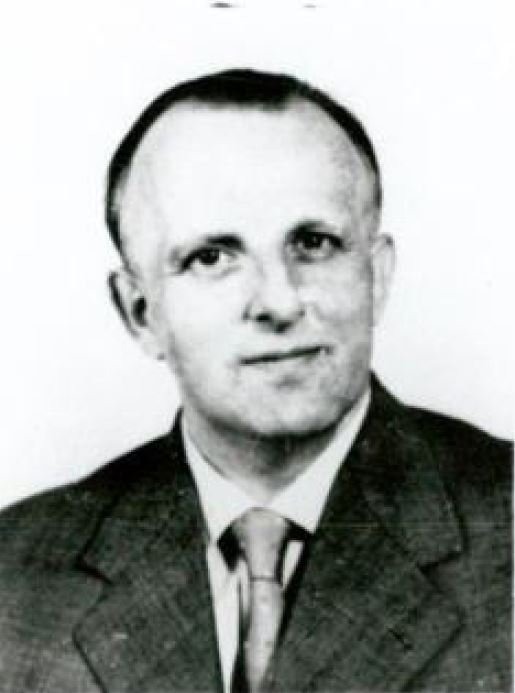
In January 1945, Wöhrn came to Prague as part of the relocation of the part of the Jewish Department that had previously remained in Berlin, Kurfurstenstrasse 116. A few days before the surrender, he went to Leitmeritz with his wife and some members of the RSHA, where he obtained a new identification card from the district council office, which showed the correct name but a false job description. In addition, the date of issue of the identification card had to be backdated.
From Leitmeritz, Wöhrn and his wife first went to Mühlheim/Ruhr, where he found accommodation with relatives. He then moved to Düsseldorf, where he earned his living by producing English translations.
Since the currency reform, he was confirmed as a sales representative in the electrical industry until his arrest on June 26, 1967. He estimates his monthly income to be around 6,000 DM per month. He has now moved his residence from Düsseldorf to Bad Neuenahr, where he has purchased a property.
Wöhrn did not undergo any denazification or arbitration proceedings. His previously unknown whereabouts were discovered when he applied to the Interior Minister of North Rhine-Westphalia in 1963 to be reinstated as an administrative or police officer. This request was fulfilled by the fact that he was additionally insured for his period of service in the public service.
Wöhrn was taken into custody and transferred to Berlin, where he was charged with murder in thousands of cases, the prosecutor sought a life sentence for Fritz Wöhrn. In addition to Wöhren, 11 others were charged in the same trial.
Once Wöhrn was convicted, he was released in most cases, but he was still convicted of five murders, and sentenced to 15 years in prison. However, the time he was in custody was counted from the sentence, so in total he would spend 13 years in prison, which was executed at the Tegel penitentiary in Berlin.
Fritz Wöhrn died in 18.12.1979 in freedom, and he was one of Eichmann’s more obscure henchmen.
/Georg
SS-Ogruf Theodor Eicke
This SS-General if someone tears up opinions, was he a war criminal or a clever organizer with a good side? If you read post-war literature, the veterans seem to have praised him highly. They gave him the epithet “Papa” early on.
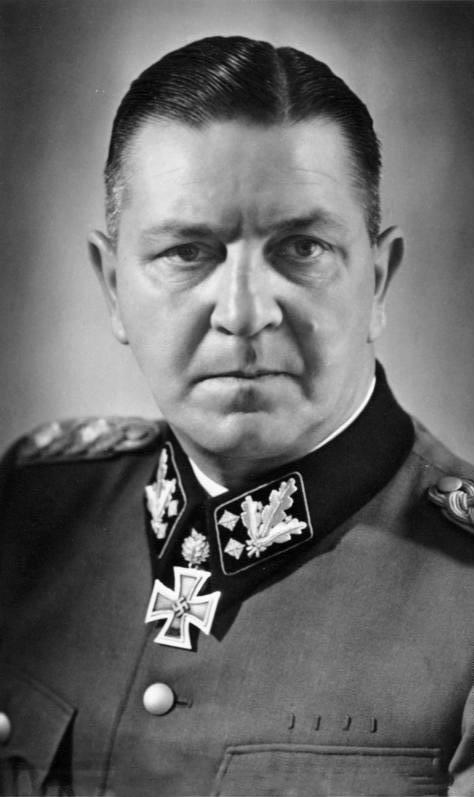
the fact is that he was the one who organized how a German concentration camp was built, why I write in German is that concentration camps were not a German invention, but created by the English during the war in South Africa, the so-called Boer war.
Eicke’s organization meant that a concentration camp had 6 departments, as well as a guard unit in the form of an SS-Totenkopfverbände. Ab I. In was the commandant’s and its adjutant’s department. Abt II, the camp was the “Gestapo”, this was independent of the commandant and other staff. Abt III. Where the camp itself in German was called “Schutzhaftlager” this department had its own commandant who had the title “Schutzhaftlagerführer”. Department IV was the administration and had everything to do with the camp’s economy. Dept. V was the domain of the doctors. They were often also responsible for the troops that were around the camp. Department VI was the political unit responsible for ensuring that the troops at the camp received the right training in National Socialism. The unit that guarded the camp was first called “Wachsturmbann” to later get the title SS-Totenkopfverbände, there were four such units 1, 2, 3 and 4 these four were responsible for guarding the camp. Before the war, the soldiers in the SS-TV units were on a rolling schedule, one week in the towers or around the fence and three weeks of military exercises. During a conversation with a veteran who admitted that he had served in KL Buchenwald between 1938-1940, when asked what it was like to guard the camp, the simple answer was “it was really boring”.
But enough about the camps, after Eicke created this model, in 1936 he was appointed supreme director of the SS-TV and Concentration Camps, his new position meant that he settled just south of KL Sachsenhausen (the villa remains and is today a youth hostel). They also built a large complex in the shape of a T, hence the name “T-Gebäude”, this building also remains, it contains a small museum otherwise the Finance Department of the state of Brandenburg takes possession of the rest of the building.
At the end of the war in 1939, parts of the SS-TV participated in the battles in Poland, mainly 2.SS-TV Brandenburg, were involved and they are said to have committed one of the first war crimes of the war. For Eicke this meant little and he praised all his soldiers. Eicke was a leader who in duty he demanded blind obedience, while in his spare time he was one of his soldiers and there are plenty of pictures of Eicke sitting in the middle of his unit smoking his pipe and saying hello to all his soldiers, which even they could do under the relaxed forms. But pity the one who had the nerve to say hello to his general in the service. Then they quickly risked having to put on the striped clothes and see themselves as prisoners in one of the camps.
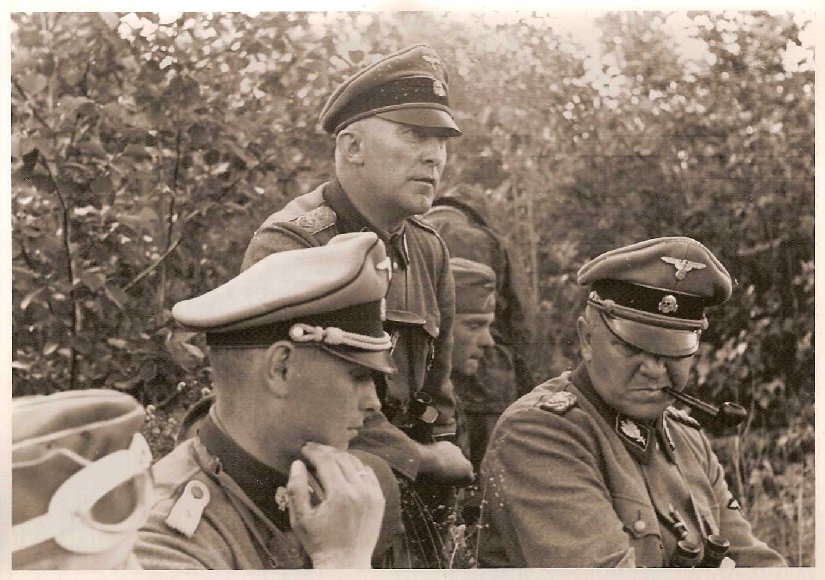
I have documents where soldiers had to leave their post at 1.SS-TV Oberbayern (Dachau) to see themselves transported under guard to KL Buchenwald to see themselves there as prisoners.
Eicke’s leadership was not looked upon kindly by other senior leaders within the SS and the party, he often got into arguments with his superiors and not infrequently RFSS Himmler had to step in, either to reprimand Eicke, but also sometimes to give him the right and with a try to get Eicke to accept that certain things must work in certain ways. This was something of a common thread in Eicke’s life. But still he was admired by his soldiers, both privates and officers.
in October 1939, the SS-Totenkopf Division was formed in Dachau, which had been emptied of prisoners only to accommodate all the new recruits and soldiers. The prisoners were mainly transferred to KL Mauthausen. They began training hard for upcoming battles, and the SS-Totenkopf Division received its baptism of fire in the Battle of France. There, the SS-Totenkopf committed a war crime that echoed far up among the generals of the regular army. What happened was that Fritz Knöchlein executed a unit from the English army at La Paradis, Eicke protected his soldiers and thought it was not so remarkable. But after pressure from both the RFSS and others, Fritz Knöchlein was withdrawn from the front. One might think that this Knöchlein would fall out of favor, but no he was later decorated with the Knight’s Cross and reached the rank of lieutenant colonel in the Waffen-SS (SS-Obersturmbannführer).
After the Battle of France, the SS-Totenkopf Division had a relatively quiet period, being used as garrison troops in France while training under the watchful eye of Eicke.
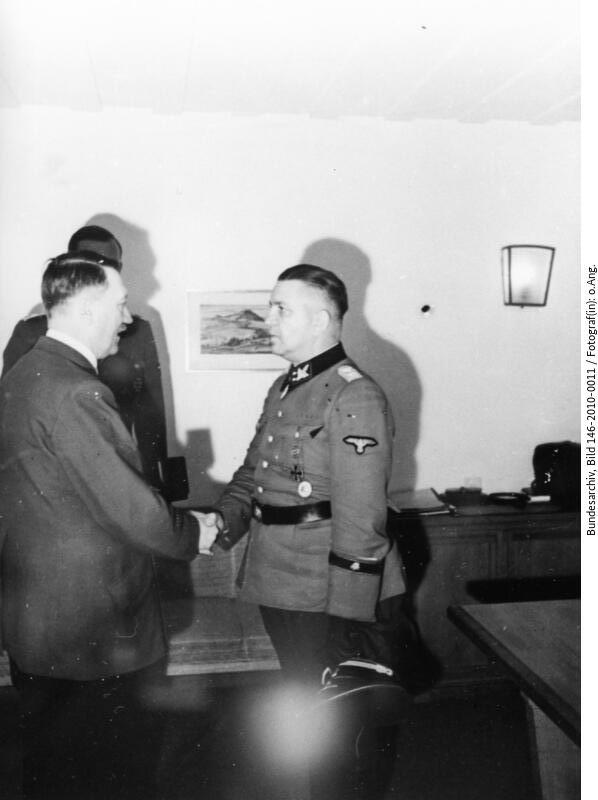
When the Battle of Barbarossa began, the SS-Totenkopf Division was part of the attack and they advanced through Poland (the Russian occupied territories) Lithuania, parts of Latvia towards the great Lake Ilmensee, a lake that would become very associated with the SS-Totenkopf Division and Theodor Eicke.
Even times Eicke was transferred to Hitler’s headquarters, he constantly requested transfers to return to his soldiers who were enclosed in what came to be known as the “Demjansk Pocket”. After eternal nagging from Eicke, who kept sending telegrams to SS-Gruf Simon and others. so he finally got to return to his beloved Division. he regained the lead and immediately launched a mass counterattack against the Russians. Under Eicke’s leadership, many soldiers and officers received high honors in the battles that followed. Fritz Christen who was part of the SS-Totenkopf-Pz.Jg.Abt was the first private to be awarded the Knight’s Cross. But countless others received this high distinction.
Demjansk would also mean that the story of Theodor Eicke would end, during a reconnaissance flight with his Fiesler Storch, his aircraft was shot down by the Russians and all on board died. This happened on February 26, 1943. The soldiers of the SS-Totenkopf Division did not believe it was true and a rescue operation was put in place, if not to recover the bodies. Eicke hated the Russians and letting him fall into the hands of the Russians was completely out of the question for the soldiers of the “SS-Totenkopf”
Theodor Eicke left behind a wife and daughter, his son had died a year earlier as a lieutenant in a Panzer unit. his daughter was also married to SS-Ostubaf Karl Leiner. Eicke’s wife was given permission to continue living in their villa south of KL Sachsenhausen.
If Theodor Eicke would have survived the war, he sure would have been prosecuted and condemed for warcrimes.
The first grave for Theodor Eicke and the two other men who died in the same plane after they was shot down,
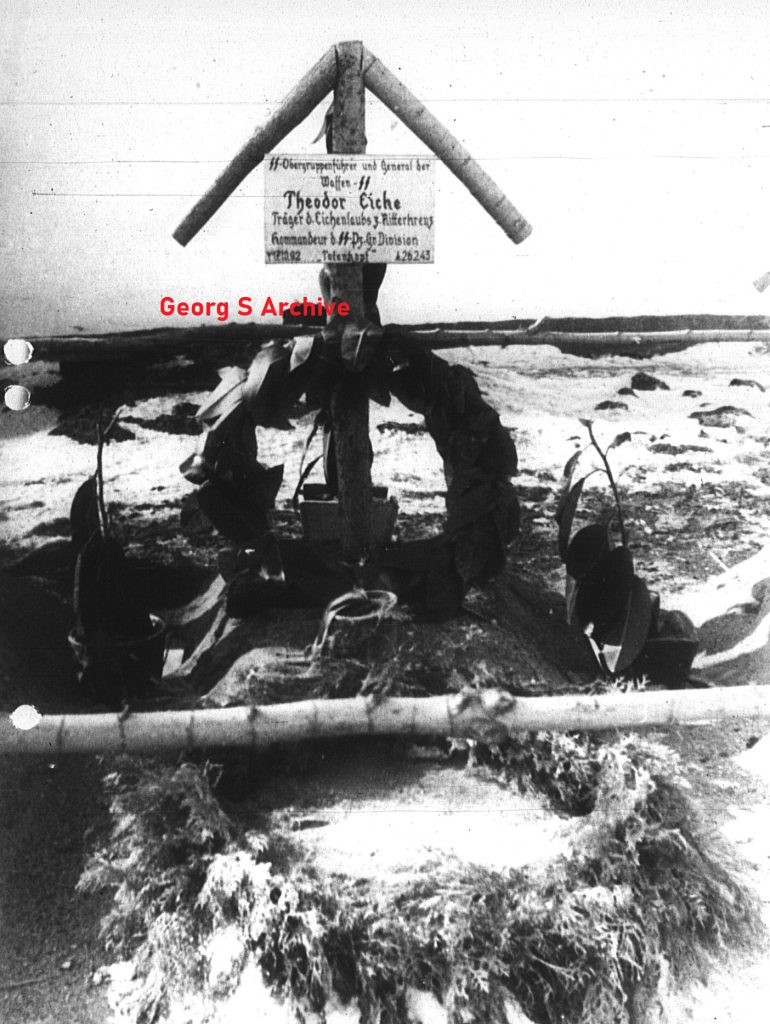
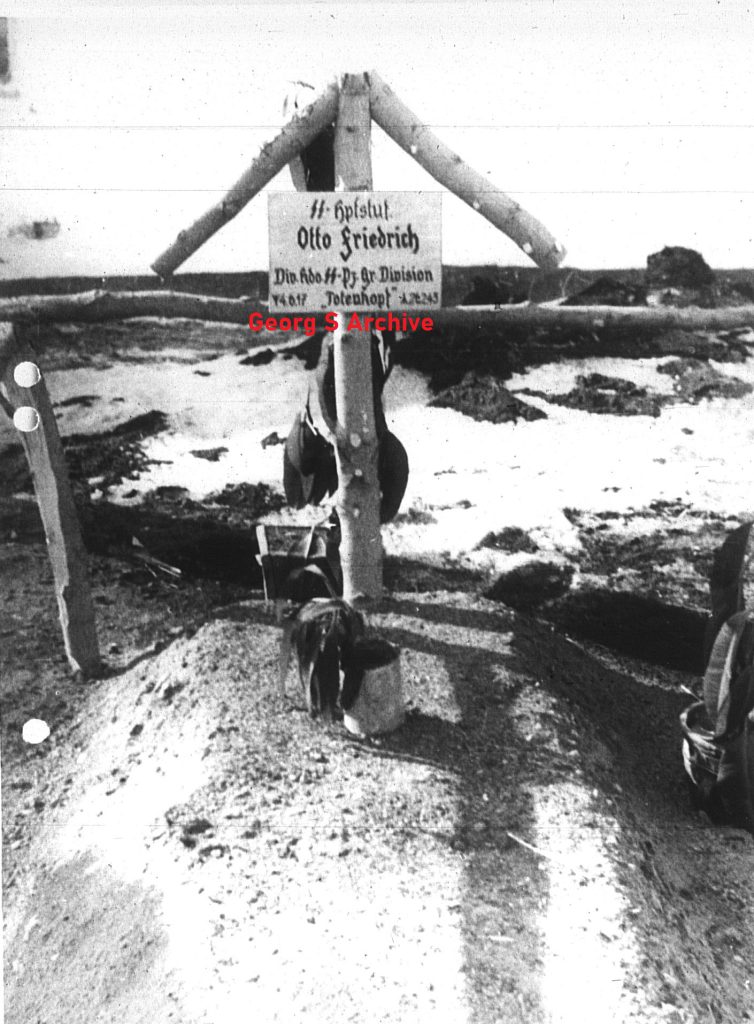
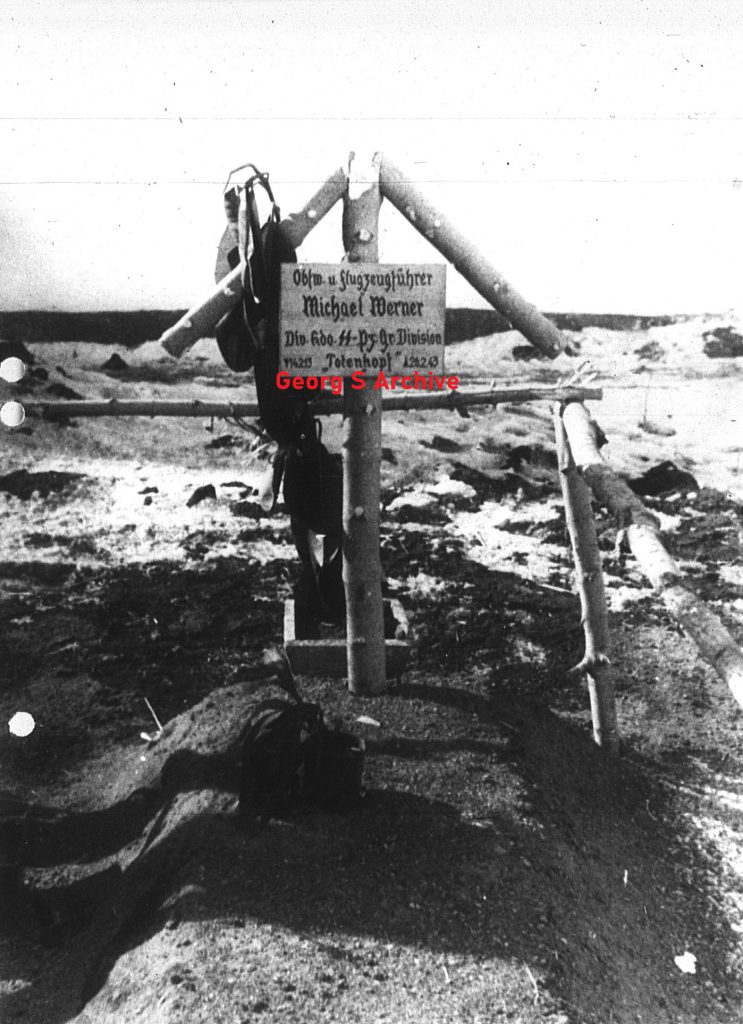
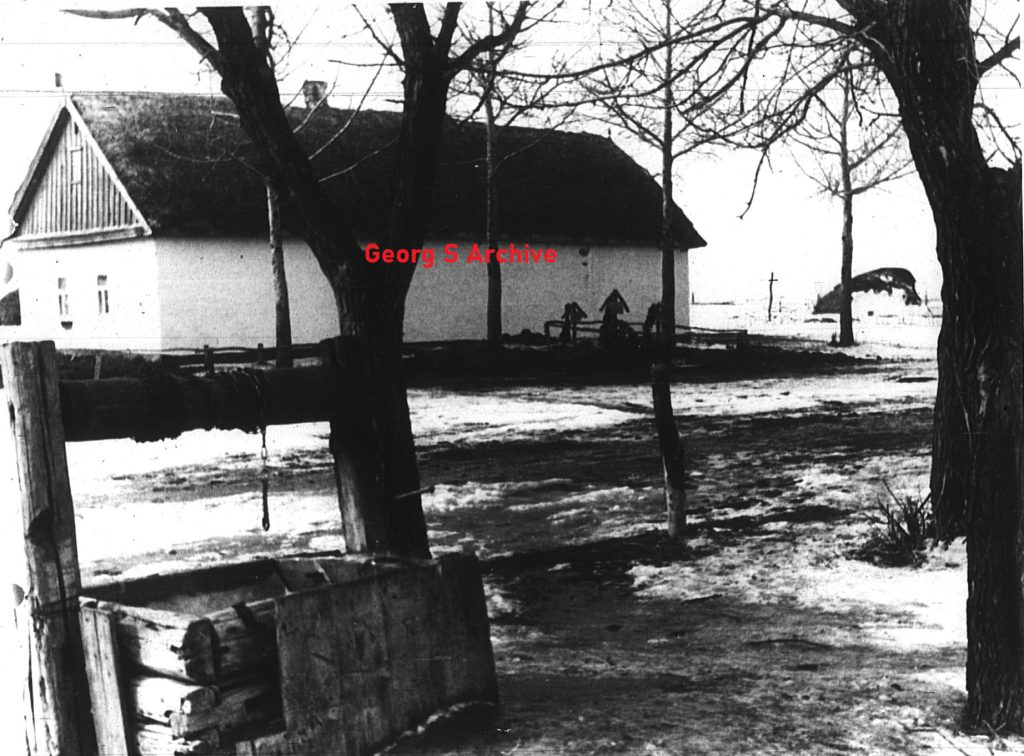
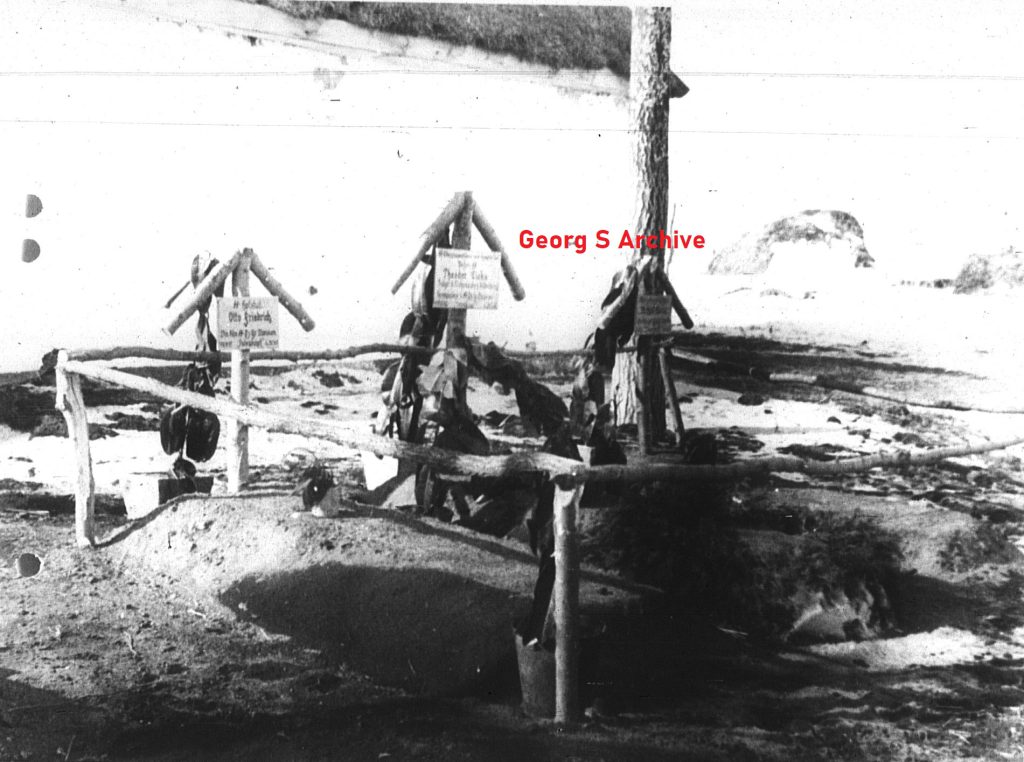
//Georg
Doctors of the SS/Waffen-SS
On the forum and the subforum SS u polizei, member Orlov have started a topic were he list biographical data and info regarding Doctors of different positions of the SS and Waffen-SS, as an example we show the story of Johann Paul Kremer. You can see the thread here – Medical Officers of the SS
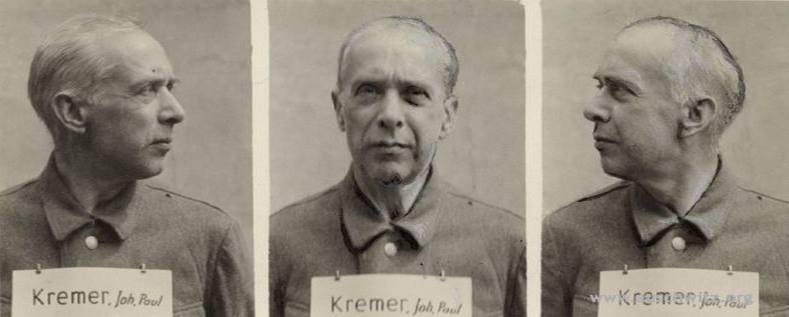
Johann Paul Kremer (26 December 1883 – 8 January 1965) was born in Stellberg. He studied in Heidelberg, Strassburg as well as Berlin; he received his philosophy degree in 1914 and his medical degree in 1919. He also studied natural science and mathematics. He was the “assistant surgeon at the surgical clinic of the University, Charité, the ward of internal diseases of the Municipal Hospital Berlin-Neukölln, the surgical clinic of the University of Cologne and prosector in the Institutes of Anatomy in Bonn and Münster. He became Dozent of anatomy in 1929 and was promoted there in 1936 to be professor in commission. At the same time, he was commissioned to lecture on the science of human hereditariness”. He also did some writing: he mentions two articles that he wrote in the diary he kept, the first being “Inherited or Acquired? A Noteworthy Contribution to the Problem of Hereditariness of Traumatic Deformations” and the second titled “New Elements of Cell and Tissues Investigations”.
Medical experiments in KZ Auschwitz
The main priority of SS doctors at concentration camps throughout German-occupied Europe was not to provide basic medical services to prisoners, but rather to give the appearance of competent medical care. Following the full-scale implementation of the Final Solution, much of their time was occupied with concentration camp exterminations, sorting/selection of the newly-arrived (primarily Jewish) prisoners (e.g. for work, experimentation, or immediate extermination), direct observation of executions and gassings, experimentation, and the fabrication of causes of deaths on prisoner death certificates. The experiments conducted by SS doctors were done for three main reasons:
1) to research methods to improve the health and survivability of soldiers;
2) to lay the groundwork for post-war scientific research and
3) to carry out the dictates of the racial policies of the National Socialist Party. Some experiments were also done at the behest of pharmaceutical companies and medical institutes, for the doctors’ own research interests, and to benefit the doctors’ personal careers.
Kremer was particularly interested in the effects of starvation on the human body, especially on the liver, and because Kremer was responsible for examining the prisoners that sought admission to the camp infirmary, he was able to personally select the prisoners that he believed would make good test subjects for his experiments. He often performed autopsies in order to extract samples from the liver, spleen and pancreas. On several occasions in his diary, he mentions the extraction of organs and tissues (which he called “living-fresh material”) from living victims.
On 3 October 1942 SS doctor Johann Paul Kremer wrote in his diary: “Today fresh living material from the human liver and spleen as well as pancreas fixed, along with lice from typhus patients fixed in pure alcohol. In Auschwitz (city), whole streets are struck down with typhus. So today I had the first serum injection against abdominal typhus administered to me. SS-Obersturmführer Schwarz is sick with typhus!”.
Also on October 15, 1942 he writes, “Living-fresh material of liver, spleen and pancreas taken from an abnormal individual.” Kremer’s diary contains descriptions of at least five more similar instances. At his hearing on July 30, 1947, Kremer stated that “I observed the prisoners in this group [to be liquidated] carefully and whenever one of them particularly interested me because of his advanced stage of starvation, I ordered the medical orderly to reserve him and to inform me when this patient would be killed by injection”.
Sonderaktion
All SS doctors were required to be present at what were called “special actions”, which was when the mass gassings took place. The most common victims were children, the elderly, mothers with young children and any others considered unfit to work. During his trial, Kremer described how a gassing was conducted and what his role as doctor was. The gassings were conducted in cabins located on the outskirts of the camp; the victims were transported by railway, and after they arrived, prisoners “were first driven to barracks where the victims undressed and then went naked to the gas chambers. Very often no incidents occurred, as the SS men kept people quiet, maintaining that they were to bathe and be deloused. After driving all of them into the gas chamber the door was closed and an SS man in a gas mask threw the contents of a Zyklon-B tin through an opening in the side wall.” Kremer’s role was to sit in a van along with a medical orderly ready to treat any officers that might succumb to the gas.
SS-Brigfhr Franz Augsberger
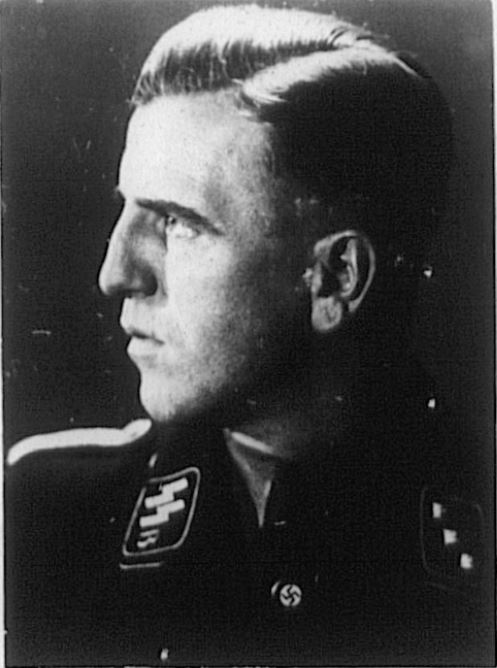
SS-Brigadeführer Franz Augsberger
DoB: 10.10.1905 in Wien
DoD: 19.3.1945 Neustadt (KIA)
His grave is located at the homepage of Volksbund
SS-Brigfhr – 21.6.44
SS-Obfhr – 30.1.44
SS-Staf – 1.7.43
SS-Ostubaf – 20.4.42
SS-Stubaf – 1.6.37
SS-Ostuf – 1.7.36
SS-Ustuf – 1.6.35
SS-Brigfhr u Gen.Maj.d.W.-SS – 21.6.44
SS-Obfhr d.W.-SS. – 30.1.44
SS-Staf. d.W.-SS – 1.7.43
SS-Ostubaf d.W.-SS – 20.4.42
SS-Stubaf. d.W.-SS – 1.12.41
Awards: Ritterkreuz, EK I, EK II, Inf.Strumabzeichen, Finnische Freiheits Kreuz, Sudeten Erin.Medaillie, Österreiches Erin.Med., Totenkopfring, Ehrendegen d.SS, Julleuchter, SA-Sportabz. – Bronze, Reichsport Abz. – Bronze.
Franz Augsberger joined the SS in 1932, at that time in his homecountry Austria, when the goverment of Austria forbid the NSDAP and their organisations. Franz Augsberger as many other Austrian SS-Men left their homecountry to join the Österreiches Legion stationied at the SS-Standort in Dachau.
Augsberger was part of that unit until the end of 1934, where he switched unit and became part of the 5.th Kp. of SS.-Standarte “Deutschland” (SS-VT), not even a year later Franz Augsberger was selected to become an Officer of the SS and between 1935 and 1936 he attended the SS-Junkerschule Braunschweig. After finishing the course he was promotod to SS-Untersturmführer, he would remain at the SS-Junkerschule Braunschweig but not as pupil this time but as officer. He remained at SS-JS Braunschweig until 1939 and the outbreak of the II World War.
His new unit as an officer was the SS-Regiment “Der Führer”, with that he had “come home” as many of the officers and soldiers in this unit consisted mostly of men from Austria. At the same time he got appointed as Officer part of the II./90.SS-Standarte (Allgemeine-SS) . His first assignment of the SS-Rgt. “Der Führer” is unfortuantely unknown but later the same year he got his new command as Kp.Chef (Comp.Commander) of the 3 Kp. of the Ersatz.Battalion in the SS-Regiment “Der Führer. He remained at this position until 1940.
In 1940 he was temporarely moved to SS-Regiment “Westland”, but soon he was transfered to attend a course to become Batallion commander. After he finished the course he was moved to III./SS-Inf.Rgt. “Nordland” as its acting commander. He ended this assignment in 1941.
In 1941 he was transfered to I./SS-Inf.Rgt.7 in what later would become 6.SS-Geb.Div. “Nord”, he was its battallion commander until 1942, when he temporarely become Regimental Commander of the SS-Inf.Rgt.7. This was very a very short command.
In 1942 Franz Augsberger would be asssigned to the newly establised SS-Eesti Brigade, constisted of volonteers from Estonia. His first command was at the SS-Übungslager Debica, where the unit was organized. It´s not know exacly what he did in the beginning. But he soon become official Commander of the 1.Regiment of this SS-Brigade. Franz Augsberger first saw action with his new unit in the north part of Belarus. The brigade grew and was soon at a size of an Division, and when Franz Augsberger recieved his last promotion to SS-Brigadeführer and Generalmajor der Waffen-SS his Brigade was official a Division and he became its Commander.
In september 1944 the 20.SS-Freiw.Gren.Division retreated into Germany and it was reorganized at the SS-Übungslager Neuhammer (close to Breslau). After refitting of the Division it was sent to Schlesien to approach the attacking Soviets.
On March 3, 1945 Franz Augsberger was awarded the Ritterkreuz but at this time he and his division was incircled by the Soviets and Augsberger was repetedly asking the Commanding General Schörner if they could break out and retreat to the German lines, Generalfeldamarchall Schörner declined this request several times. But finally on March 19, 1945 did Augsberger the order to break through the Soviet lines and establish contact with German forces.
Different sources give different dates when Franz Augsberger was Killed in Action, but I have stuck to the 19´th as that was the date he was ordered to retreat. His commanding car he was travelling in was hit by an missile and Franz Augsberger was killed instantly.
Franz Augsberger was very liked by his men in the 20. SS-Freiw.Gren.Div. and they held his memory high.
//Georg
Sources: SSO Augsberger, Franz and http://www.eestileegion.com/

